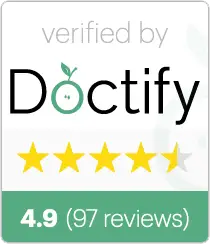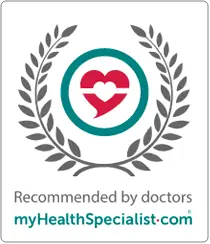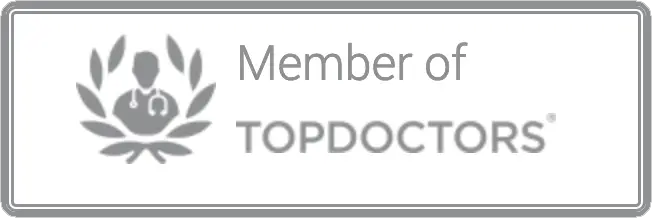Thanks to Bradley Scanes, British Gymnastics, W5 Physio, and Chelmsford Physio, Physiotherapist for being our first guest blogger and covering this difficult topic!
Atraumatic Shoulder Instability
Firstly, thanks to Nick for inviting me to write for his blog. Loving the information and content he is putting out there and glad our love for Instagram and shoulders has brought us together. And secondly, thanks for this nice, small, easy topic to talk about ;).
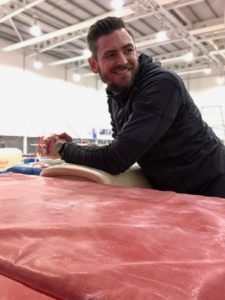
What is atraumatic shoulder instability?
Basically atraumatic instability is instability of the shoulder i.e. dislocation, without a trauma. Done.
Not quite, and this is a good topic to talk about because most shoulder dislocations are a result of trauma (an injury) however some people experience episodes of instability without the trauma. So it is important to work out why, so that we can help them limit its impact and keep them performing or going about their daily life.
The majority of people who suffer from this will have a combination of underlying laxity in the ligaments and the joint capsule, and reduced muscle strength and control. Causes can vary from repetitive movements that create some micro trauma to the joint capsule, for example sports where there is a lot of throwing or overhead activity or where the joint is forced into extreme rotation, like gymnastics. This loosens the capsular restraints. Other causes can be our genetics, our development or there have been some studies that have shown some psychological causes.
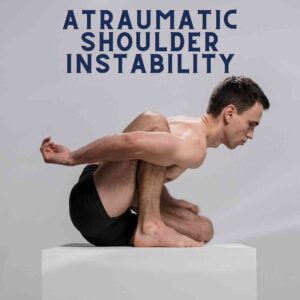
Who is affected?
This is often in the younger person under the age of 25. As mentioned there will be no clear history of injury but there may have been something slight that started it all off. You may be higher on the hypermobility scale, there may be a history of subluxations or dislocations; there may be pain particularly at the front of the shoulder; there may be fear around movement or performing tasks with the shoulder.
The important question always remains though, what can we do about it?
There are some cases that will need to be referred into a specialist shoulder unit, and some that will need surgery. However, once abnormal muscle patterning has developed, amongst other life stresses, surgery can sometimes result in a poorer outcome. But you, along with your shoulder doc and your physio will have a good conversation together, should that be the case.
The good news is, a large number of people will be able to recover and manage with physiotherapy and rehabilitation and this should be the first port of call. Having a good structured rehabilitation programme, which factors in all muscle function, pain and any psychological factors such as fear and anxiety about moving the shoulder (1) is key. Then being consistent with it vital as some of the studies show that it takes a high level of compliance to reach good results…and most of these studies took place over 12-24 weeks…so it takes a long time and is not easy (2, 3, 4).
There are many different routes for rehabilitation to follow and many different exercises that can be done, it will depend on individual assessment as to where the focus may be. This will usually involve working on the muscles that control the scapula (shoulder blade), the muscles that act on the humerus (upper arm) and the muscles that control the shoulder joint itself. The below are just a few examples of the sort of thing you might be doing in each stage.
1. 4 point kneeling weight shift
2. 4 point Progression
3. Isometric External Rotation
Stage 2:
We are adding a bit of weighted movement to start to build some strength and endurance. It’s best to work with pain, effort and fatigue when defining sets and reps which means work to fatigue with what you can manage. This will normally work out around, 3-4 sets of 12-20 repetitions as we look to build control and stability.
1. Side lying external rotation
2. Prone external rotation
3. Prone Horizontal abduction
Stage 3
We are trying to put different movements together and tap into the rest of the bodies kinetic chain.
1. Flexion with external rotation
2. Lunge with resistance
2. Lunge with resistance
Stage 4
Now we want to add some dynamic movement to it, work some of what we call our stretch shortening cycles as you start to progress back to your normal activities and / or sport.
1. Throwing and catching
2. Drop and catch
General rule is, if there is progress at 12 weeks, persist with it for another 3-6 months to see where you get too. If at 12 weeks no progress has been made then it is probably time to explore other options open to us. Good luck!!
Key Points
- Physio is first line of management. It’s long and it’s hard work, be consistent and stick with it. You will get there.
- Whole process needs to be a joint decision-making process with you, your shoulder consultant and your physio.
- If not improving, then referral on to a shoulder consultant. Some will need to be referred direct depending on certain criteria discussed above.
- Build confidence, stability, control and then add the fun stuff.
Bradley Scanes
MSc BSc (Hons) PGcert
Chartered Physiotherapist (CSP, HCPC & ACPSEM Member)
Instagram: @physiobrad
Twitter: @bscanes
Nick Ferran @ Shoulder & Elbow London Ltd
Clinics in:
Chiswick – Harrow – St. Johns Wood
As an Amazon Associate, I earn from qualifying purchases.


